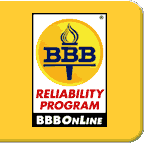Course Description:
This course is the first in a series of three courses designed to provide
students preparing to teach mathematics to children in
grades K-8 with opportunities to explore mathematical ideas using a problem
solving approach and a variety of
manipulative materials. The focus of Math 120 is the enhancement of a deep,
conceptual understanding of number
systems and their properties . Emphasis is placed on problem solving, reasoning,
and the ability to communicate
mathematical thinking orally and in writing. Math 120 meets Tier I requirements
for Early Childhood and Middle
Childhood majors ONLY. A grade of C or better is required in Math 120 to
continue in the sequence. (This means a C,
not a C-.)
Learning Objectives:
In particular, students will:
• Develop mathematical thinking and communication skills;
• Appreciate the breadth and interconnections of the mathematical sciences;
• Be competent in the appropriate use of technology and as an aid in
understanding mathematical concepts;
• Gain [professional] competencies as outlined in the NCTM (National Council of
Teachers of Mathematics) learning
indicators. In particular:
o Acquire mathematical thinking and communication skills including knowledge of
a broad range of
explanations and examples, good logical and quantitative reasoning skills, and
facility in reconnecting
component parts of concepts and methods , and
o Gain understanding of and experience with the uses of mathematics in a variety
of areas.
Course Goals:
1. Students should develop the ability to engage in serious mathematical
thinking, reasoning, and problem solving and,
in so doing, deepen their knowledge of mathematical concepts central to the K-8
mathematics curriculum as they
pertain to number systems and their properties.
2. Students should enhance their ability to investigate, conjecture, discuss,
and validate mathematical ideas using a
variety of hands-on resources and manipulatives.
3. Students should enhance their ability to communicate their mathematical
thinking and reasoning orally and in
writing.
4. Students should improve their confidence in their ability to competently use
mathematics in a variety of situations
(abstract, real -world).
5. Students will demonstrate competency in basic arithmetic computations without
the use of electronic computing
technologies.
Evaluation:
Homework will be collected daily, however it is only graded for attempt as it is
only a small part of your grade. If
you are having difficulty with the assignments or finding that your answers
differ from the back of the book, it is
suggested that you ask questions during the appropriate time in class. Along
with homework there will be several in
class activities assigned throughout the quarter. Your midterms will be Thursday
of the 4th and 8th weeks of the quarter.
The final is Tuesday March 17 at 5:30 p.m. Missing an exam will not be
tolerated, in case of an extreme
emergency, contact me as soon as possible using one of the means given above.
Your grade will be assessed based on the following:
| 2 midterms |
25% each |
| Final |
35% |
| Homework and |
|
| Activities |
15% |
| Total |
100% |
Letter grades will be assigned based on the standard
A=100-93,A-=93-90,B+=90-87,… grading scale.
Academic Dishonesty: As an academic and educator, you take pride in your
own work while respecting and honoring the
work of others. Work submitted must be your own. When using others’ work, you
must state that explicitly and sufficiently.
This has several aspects to it:
• all sources used must be cited,
• all quotations must be in quotation marks and include their page number,
• all paraphrases must be attributed to the original authors.
Copying material from other sources without attribution is Plagiarism, no matter
whether it is done intentionally or out of
carelessness. Academic misconduct is a Code A violation according to the Ohio
University Code of Student
Conduct. This includes, but is not necessarily limited to, cheating, plagiarism
and forgery. If the instructor finds that
a student has used others’ work as if it were his or her own, s/he may be
referred to the director of judiciaries and
may receive an “F” for that assignment or the course. Other possible results
are: the student’s grade being lowered ,
suspension or dismissal from the University
Electronic recording of class meetings requires special
permission by the instructor; unauthorized recording violates both
copyright law and Ohio University policy.
Note: Copying from online sources without attribution might appear as an
attractive and easy thing to do. It is
misconduct like any other form of plagiarism.
Calculators: Students will be allowed to use calculators on all
quizzes/tests given throughout the quarter unless specified
otherwise by the instructor. Recording definitions into the memory of the
calculator is not permitted . The instructor
reserves the right to check calculators for misuse.
Attendance: Although formal attendance will not be used in your grade
evaluation, studies have established a strong
correlation between grades and class attendance. You are required to hand in
homework on time even if not present. No
make up tests will be given.
Expectations: Students should be aware that they are expected to read all
sections of the textbook addressed in the course
PRIOR to that section being addressed in class . In addition, instructional time
is limited and not all topics in a given
section will be addressed in class. Students are still held responsible for
concepts addressed in the readings that are
not directly addressed in class. Students are expected to spend a minimum of
2 hours outside of class for every hour
spent in class (i.e., a minimum of 8 hours of study per week).
Topics to be addressed:
Chapter 1: Mathematical Processes
.2 Reasoning Mathematically
.3 Mathematics as Problem Solving
Chapter 2: Sets and Whole-Number Operations and Properties
1.1 Sets and Whole Numbers
1.2 Addition and Subtraction of Whole Numbers
1.3 Multiplication and Division of Whole Numbers
1.4 Numeration (Hindu-Arabic Place-Value Numeration System)
Chapter 3: Estimation and Computation
.1 Strategies and Procedures for Mental Computation
1.2 Strategies and Procedures for Estimation
1.3 Algorithms for Addition and Subtraction
1.4 Algorithms for Multiplication and Division
Chapter 4: Number Theory
.1 Factors and Divisibility
.2 Prime and Composite Numbers
Chapter 5: Understanding Integer Operations and Properties
.1 Addition, Subtraction, and Order Properties of Integers
.2 Multiplication, Division, and Other Properties of Integers
Chapter 6: Rational Number Operations and Properties
.1 Rational Number Ideas and Symbols
.2 Adding and Subtracting Fractions
1.3 Multiplying and Dividing Fractions
1.4 Operations with Decimals
1.5 Comparing , Ordering, and Connecting Rational Numbers.
Chapter 7: Proportional Reasoning
1.1 The Concept of Ratio
1.2 Proportional Variation and Solving Proportions
.3 Solving Percent Problems



